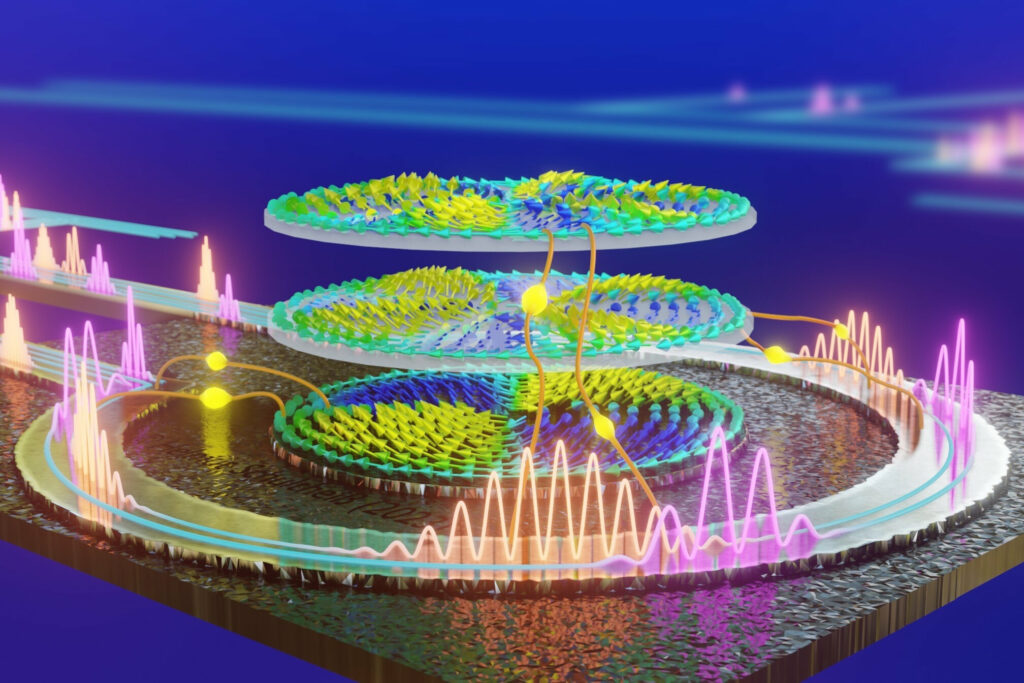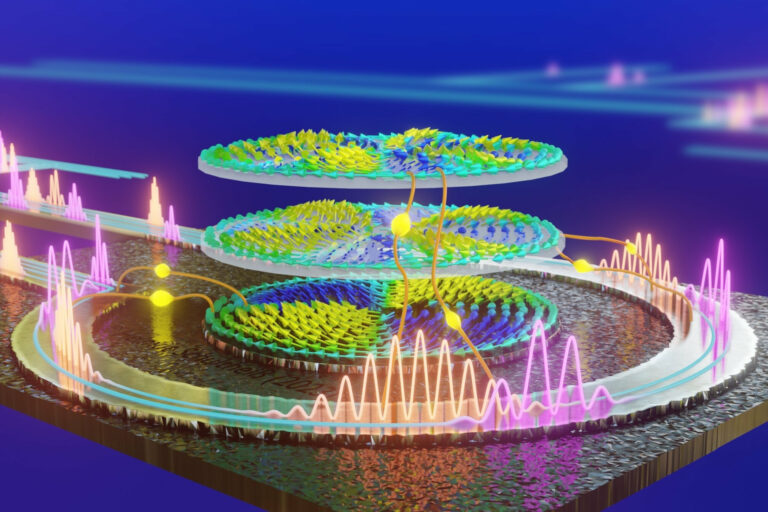Research Team Advances Neuromorphic Computing to the Next Level
Neuromorphic computers diverge from traditional binary computation, utilizing physical phenomena to discern patterns within extensive data streams with remarkable speed and exceptional energy efficiency. In their NIMFEIA project, Katrin and Helmut Schultheiß, alongside their team at the Helmholtz-Zentrum Dresden-Rossendorf (HZDR), have propelled this technology significantly forward. Moreover, they have demonstrated the seamless integration of their approach into conventional chip manufacturing, with their findings recently published in Nature Communications.
The innovations developed at the HZDR-Institute of Ion Beam Physics and Materials Research go by various names. One term is “Neuromorphic computing,” drawing parallels to processes occurring in the human brain. Another designation is “Unconventional computing,” emphasizing the stark departure from the prevalent Boolean logic of zeros and ones in contemporary data processing. Alternatively, it is labeled “reservoir computing,” utilizing non-linear physical phenomena for pattern recognition in data streams.
Helmut Schultheiß, who leads the Emmy Noether Group “Magnonics” at the HZDR, elaborates on the relevance of this technology in diverse fields of automation, including autonomous driving, the “Internet of Things,” and edge computing. He points out the challenges faced by industries dealing with rapid data signals, as many sensors deliver swift, small data packets. Recognizing patterns in these packets poses a significant energy challenge for current computer architectures.

Hence, Katrin and Helmut Schultheiß, along with their team, have turned to spin waves, also known as magnons, for their research. Although the concept of using spin waves for a new data processing technology is not entirely new, Schultheiß and his team have overcome a key obstacle that impeded practical implementation. “Up to now, all concepts have relied on the necessity for spin waves to propagate from point A to point B for effective utilization,” explains Helmut Schultheiß. “However, there are no practical materials for this purpose.”
Consequently, Schultheiß and his team took a different approach, compressing the entire process into a magnetic disk just a few micrometers thick and inducing vibrations. The entire system vibrates at different frequencies simultaneously, akin to the patterns formed on a drum when rhythmically beaten with sand on its surface. These vibrational modes extend throughout the entire structure, representing standing waves resonating across the entire body instead of merely traveling from point A to point B. The drumming, or data input, can originate from various sources such as sensors, initiating a complex interplay of different oscillations and ensuing non-linear processes.
“Our research has demonstrated that distinct input patterns consistently generate unique oscillation patterns,” states Schultheiß. “Moreover, this process is time-sensitive, allowing us to alter the sequence of input signals, resulting in corresponding changes in patterns—a crucial requirement for real-time data evaluation.” Helmut Schultheiß emphasizes an additional prerequisite for the technology to transition from the laboratory to the market: compatibility with complementary metal-oxide-semiconductor (CMOS) technology, the standard for processing in the chip industry.
This insight stems from his collaboration with industry partners GlobalFoundries and Infineon in the NIMFEIA project. “While we explore new technologies, CMOS technology will continue to underpin our prosperity for decades to come,” he notes. “This technology has permeated every aspect of our lives, from the smallest light switch to phones and pacemaker sensors.” The substantial investments required for chip factories, essential contributors to prosperity, cannot be easily replicated or reconfigured. “What sets our technology apart is that it requires no reconfiguration,” Schultheiß points out. Nevertheless, Katrin and Helmut Schultheiß, along with their team, don’t intend to replace conventional computers with their innovative technology. Instead, their goal is to complement existing systems in a meaningful way. “Boolean computation remains the leader for complex mathematical calculations,” asserts Helmut Schultheiß.
“It’s unlikely that anything better will emerge in the next hundred years for arithmetic tasks. However, current computer architectures struggle with recognizing patterns and handling complexity.” Helmut Schultheiß envisions applications in areas such as traffic optimization, where neuromorphic computers could sift through vast data from sources like Google, smartphones, and cars to predict traffic jams before they occur—an intricate task for conventional computers due to its complexity and numerous calculation steps. The compact size and exceptional energy efficiency of these novel technologies make them well-suited for “edge computing,” directly operating on sensors.
This is particularly beneficial in scenarios where transmitting large amounts of data is challenging or costly, such as in outer space. For instance, instead of sending all measurement data from an Earth observation satellite to a ground station, it could be processed on-site, saving bandwidth and energy. In medicine, integrating a neuromorphic computer directly into a pacemaker could enable the detection of patterns indicating arrhythmia or ventricular fibrillation from the pacemaker’s signals. “Intelligent maintenance could also greatly benefit from edge computing with neuromorphic processes,” Schultheiß notes. In applications like wind turbines, the technology could identify oscillation patterns in drive shafts that signal bearing damage, facilitating maintenance before the bearing fails—resulting in cost, energy, and resource savings.
This article is republished from PhysORG under a Creative Commons license. Read the original article.
Do not forget to share your opinion with us to provide you with the best posts !




0 Comments